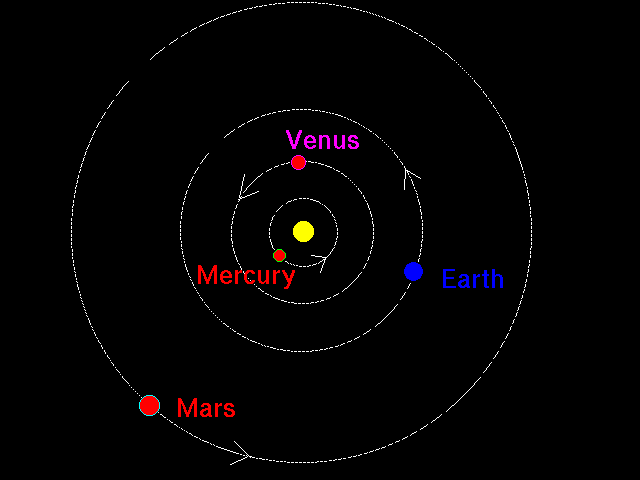

How much longer?
P a
(yr) (AU)
Mercury 0.241 0.387
Venus 0.615 0.723
Earth 1.000 1.000
Mars 1.881 1.524
Jupiter 11.86 5.203
Saturn 29.46 9.540
How is the period, P, of an orbit related to the length of the
semimajor axis, a, of the orbit?
where k is the same for all the planets in the solar system.
Try it:
P a P2 a3 p2/a3
(yr) (AU)
Mercury 0.241 0.387 0.0581 0.0580 1.002
Venus 0.615 0.723 0.378 0.378 1.001
Earth 1.000 1.000 1.000 1.000 1.000
Mars 1.881 1.524 3.54 3.54 1.000
Jupiter 11.86 5.203 141 141 1.000
Saturn 29.46 9.540 868 868 1.000
Note that if we measure a in AU and P in years, then
the constant k in Kepler's Third Law is 1. This means that

This allows you to find P if you know a and vice versa.
If there were a planet with an (approximately circular) orbit with a radius of 3 AU, how many years would it take to go around the sun?